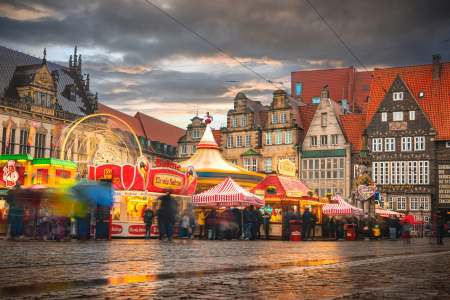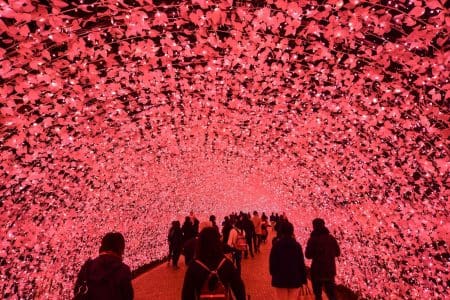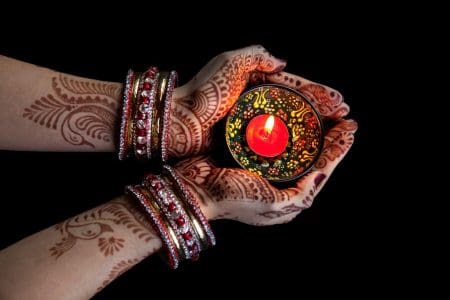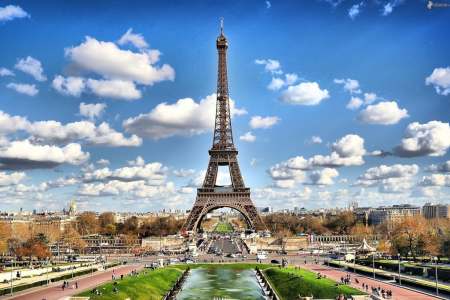
- This event has passed.
Also called the Olympic Games of nomads, the spectacular Naadam Festival in Mongolia is the country’s biggest event and its national pride. Taking place every July, men and women compete in horse racing, archery and wrestling between impressive and colourful opening and closing ceremonies that turn the whole country topsy-turvy.
During the entire year young and old in Mongolia train hard to prepare for the games that see very young horse riders, muscled wrestlers and elegant archers show off their skills. Apart from the sports events, there’s a lot of music, parades, traditional dress and local delicacies to be enjoyed. The Naadam Festival is considered to be of great importance for the preservation of Mongolian culture and history, and in 2010 it became inscribed on Unesco’s List of Intangible Cultural Heritage.
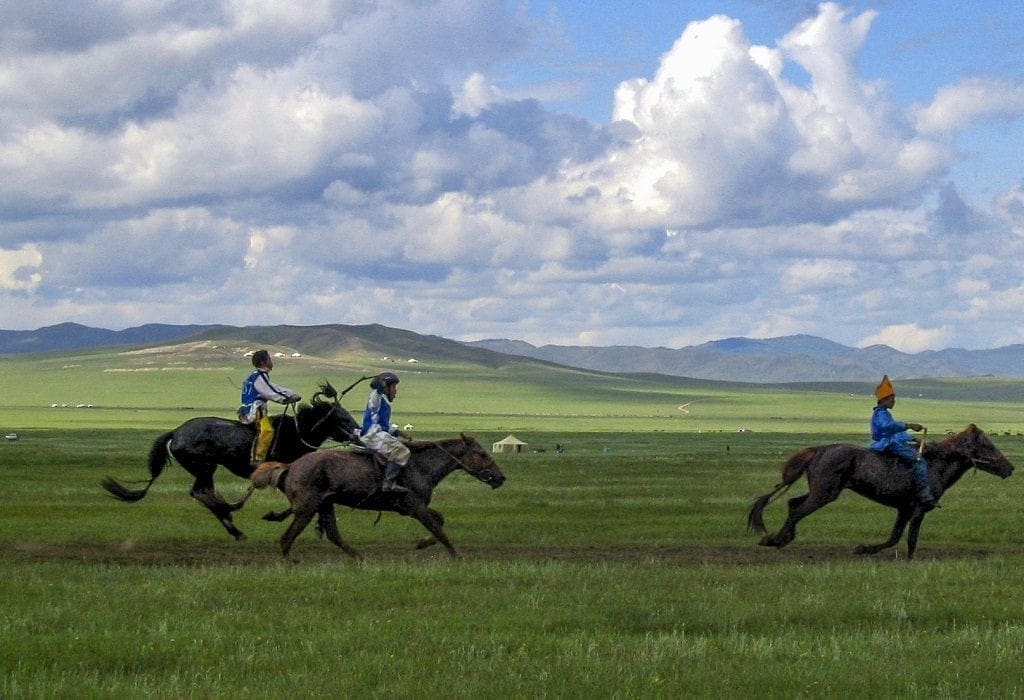
What to expect at the Naadam Festival in Mongolia
In the capital Ulaanbaatar, it all starts with a parade of what seems like an endless row of members of sports clubs, dance and theatre troupes, army units, motorcycle clubs and many more, traversing the stadium’s fields. There’s plenty of music and dancing while various dignitaries are welcomed with speeches.
The Nadaam Festival is one of the many Mongolia festivals throughout the year, from the Khövsgöl Ice Festival and Tsagaan Sar or Mongolian New Year in winter, to the Camel Festival and Winter Golden Eagle Festival in March.
Around noon the wrestlers enter the stadium and compete with each other for the highest honour – the Naadam Championship. It’s a large stadium and a lot of the action happens at quite a distance from the spectator tribunes so keeping a pair of binoculars handy might not be a bad idea. If you happen to be in a restaurant, patrons will enthusiastically cheer on their favourites on TV.
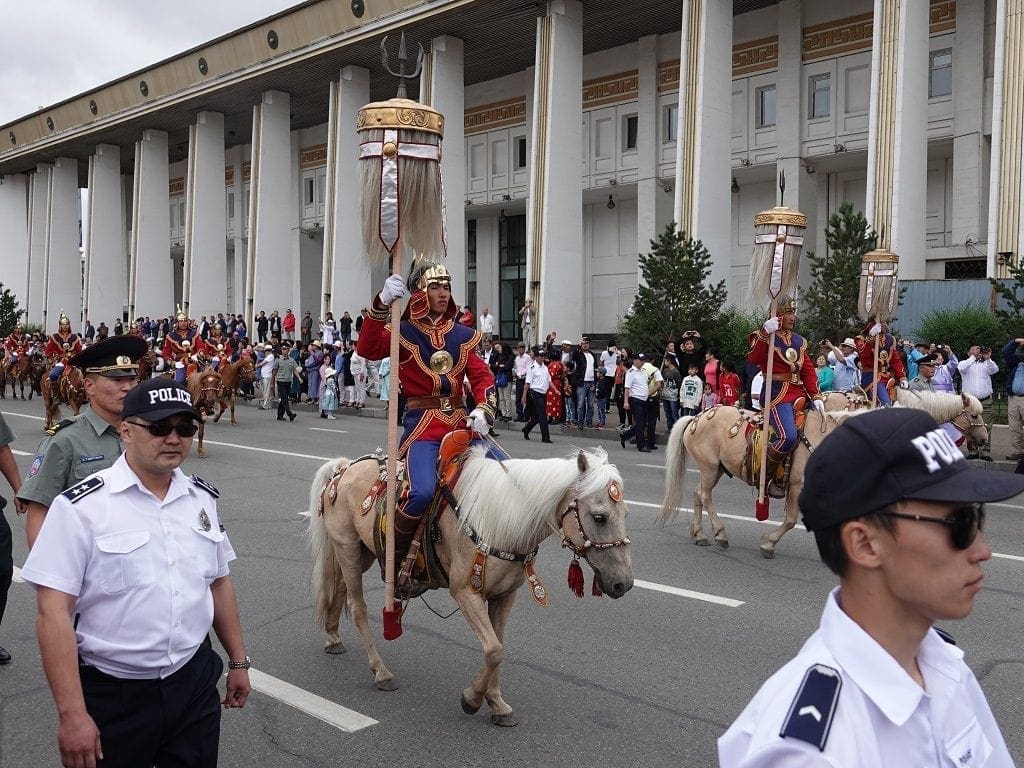
Outside the stadium visitors jostle around the souvenir and eating stalls, aspiring Mongolian beauty queens show off their most impressive dresses, illegal betting and gambling take place until the police intervene, and army veterans parade with medals pinned to their chest. Behind the stadium archers aim at their targets with large bows while in a big tent a popular, centuries-old game – called shagai or “knuckle bone shooting” – takes place where small bones of a goat (sum) are flicked by finger to a target. Still further outside the stadium youthful horse riders gather for the long race across the steppe. Expect traffic to come to a standstill as everyone wants to be part of the fun.
Where does the Naadam Festival 2025 take place
The celebrations happen all over the country in almost every village in Mongolia. In China, the Mongolian population also celebrate Naadam, albeit on a smaller scale. But the most important and impressive events happen in Mongolia’s capital Ulaanbaatar inside its National Sports Stadium and the immediate vicinity.
When planning your Mongolia trip, read our account, Mongolia Travel: Staying in a Ger.
Some visitors escape the frantic bustle of the capital and visit the countryside where the games are less spectacular but where there’s a better chance to watch everything close up.
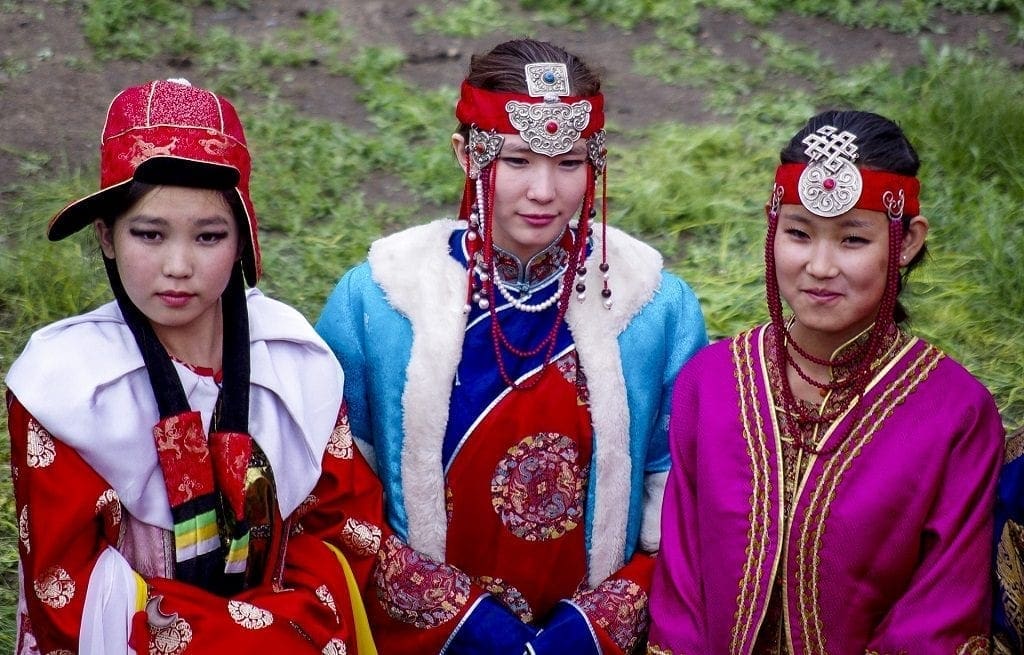
When is the Naadam Festival 2025
It takes place from 11 to 15 July 2025.
Historic background of the Naadam Festival
The festival goes back all the way to the 11th century when Genghis Khan organised games to train his soldiers. The original name of this national festival is Eriin Gurvan Naadam which means “the three manly games”, which are Mongolian wrestling, archery and horse racing. Today the festival has opened up to women too for the horse races and archery, but not yet for the wrestling competitions. The festival now officially commemorates the 1921 revolution when Mongolia declared itself independent from China.
The four parts of the Naadam Festival
The Ceremony: just like with the Olympic Games, there’s an official ceremony that sees performances by dancers and musicians, and a long parade of athletes and horsemen.
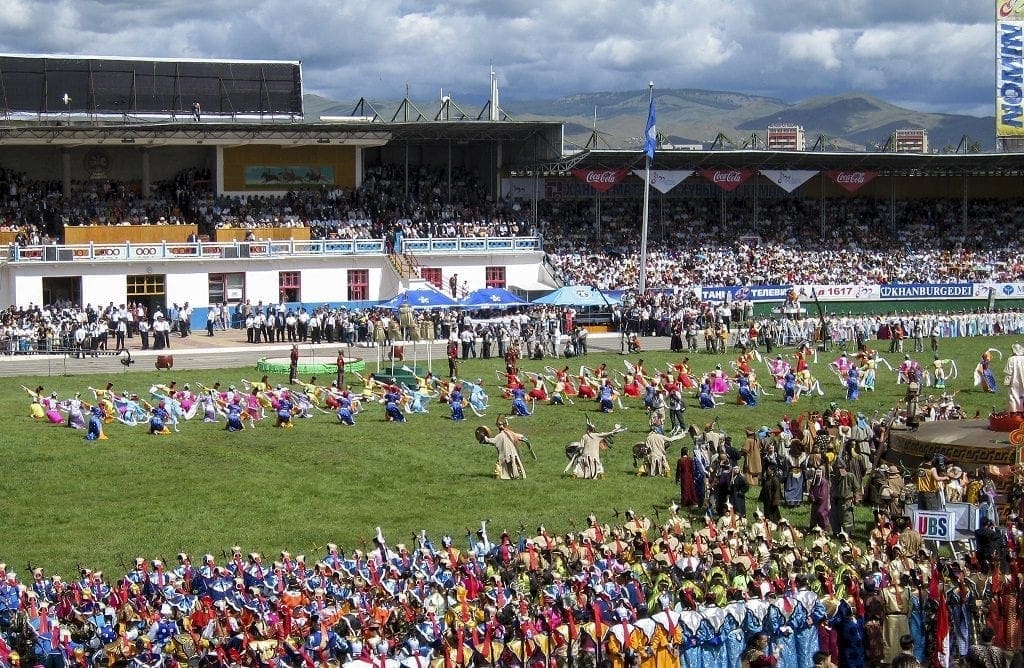
Wrestling: called böhk in Mongolian, this is traditionally the most important of “the three manly games”. There’s no weight category or time limit – the aim is to force your adversary’s body to touch the floor with anything other than feet or hands. In a somehow bizarre spectacle, over a thousand wrestlers enter the arena, waving their arms like eagles and dressed in large leather boots, a velvet dome-shaped hat, a red or blue silk jacket and a small pair of underwear-like pants. The jury is honoured with a dance called devekh while the wrestlers are praised by song. The tournament lasts until the strongest wrestler has defeated all of his competitors. Depending on their results, every wrestler receives a title such as elephant, eagle or lion. The ultimate winner is crowned as Titan.
Archery: it’s been said that Mongolians are born with a bow in their hands – they are being trained as archers from childhood. Unlike in the West, there’s not a single target but hundreds of surs, can-like cylinders made of leather. Each team consists of five to 10 men or women, all dressed in their most colourful traditional costume, who have to shoot with incredible precision 33 surs from a distance of 65 to 75 metres. The first team achieving this is the winner. While the shooting takes place, a song called Uuhai is sung with a change of intonation whenever a target is hit.
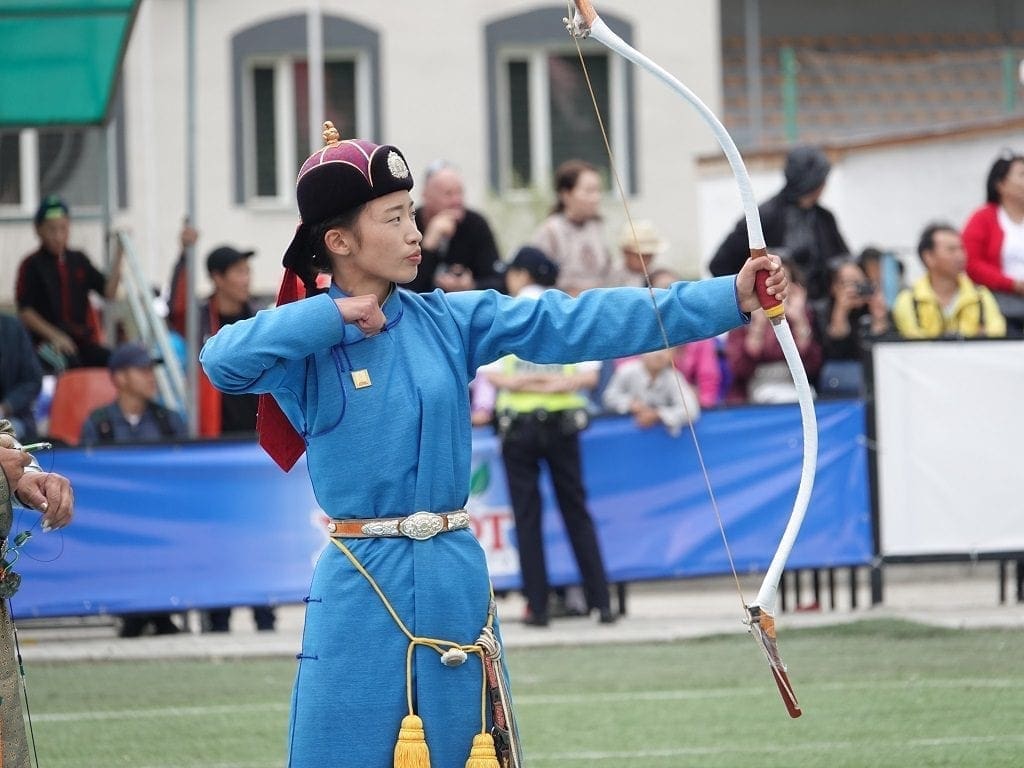
Horse races: up to a thousand Mongolian horses from all over the country are brought to Ulaanbaatar to take part in the races, which are quite different from in the West. Instead of a short race of two kilometres, the Mongolian races are 15 to 30 kilometres long depending on the age of the horse. The jockeys are children between the ages of five and 15 who are specially trained for it, with the belief that the horse can give its very best with a lightweight rider. At the end of a race, it’s the horse that it celebrated instead of the jockey.
For more Central Asia travel, read Sampling the Great Outdoors in Kyrgyzstan.
The first five horses that reach the finish line are honoured with music and poetry, while the last horse is also serenaded to give it more courage and luck for next year’s tournament. The Mongolian horses are small but strong, and don’t have a name since they are not considered anyone’s possession – instead they are referred to by their physical characteristics. As the races take place outside the city on the wide open steppe, you can picnic with locally sold Mongolian delicacies.
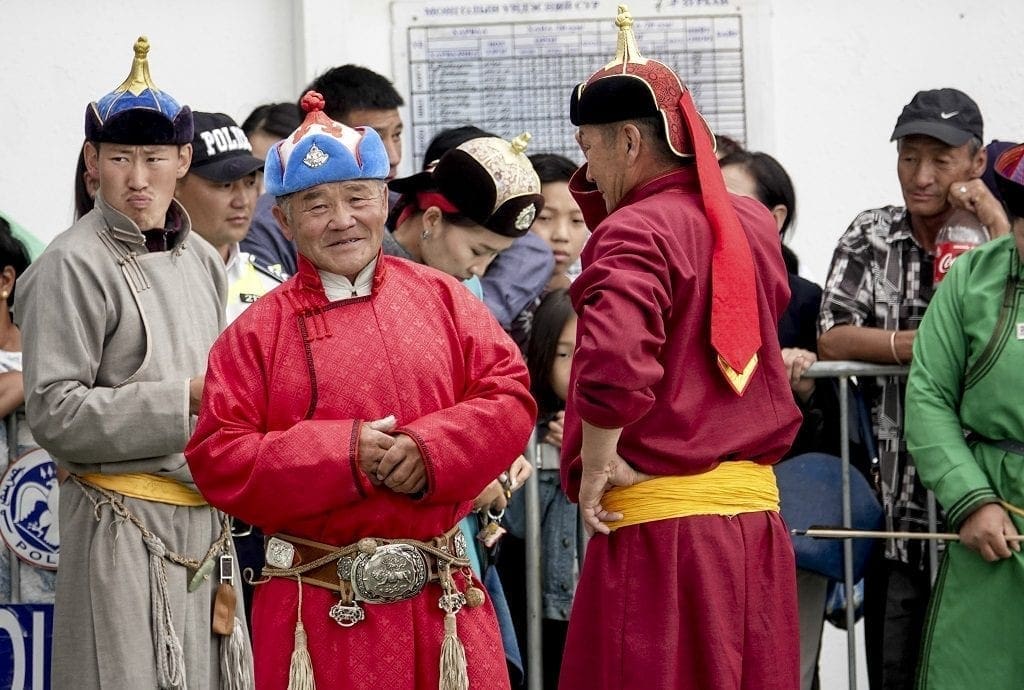
Tickets
Tickets to the games in the stadium are sold first to tour operators, hotels and hostels before being offered for sale at the venue. You can also book a tour to the Naadam Festival through a local registered company such as Stone Horse Expeditions & Travel who have kindly supplied some of the images used on this page.
Tip: buy a special photo permit with your ticket. This may cost a little extra but it will give you a seat in the front rows.
Mongolia hotels and how to get there
This is the most popular and busy time of the year in Mongolia, so book your accommodation well in advance.
Alternatively, inject some adventure and fun into your trip and travel more eco-friendly by train. The Trans-Siberian Railway will bring you all the way from Europe to Mongolia.
Cover image credit: Marcin Konsek
